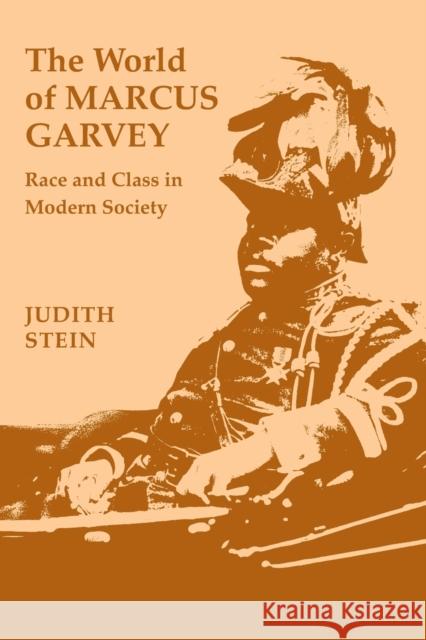World of Marcus Garvey: Race and Class in Modern Society » książka
World of Marcus Garvey: Race and Class in Modern Society
ISBN-13: 9780807116708 / Angielski / Miękka / 1991 / 320 str.
In the years during and after World War I the Pan-Africanist Marcus Garvey led what has been called the largest international mass movement of black people in the twentieth century. He and his organization, the Universal Negro Improvement Association (UNIA), built a steamship line, sponsored expeditions to Liberia, staged annual international conventions, inspired many black business enterprises, endorsed black political candidates, and fostered the study of black history and culture.
Judith Stein has not written a conventional biography, though Garvey is the central character. The book is more a study of Garvey's ideology and appeal and of the UNIA and the social basis of its support. Stein examines Garvey's movement in light of the dialectic of race and class that shaped it. Whereas other historians have depicted Garveyism variously as a back-to-Africa, civil rights, or Black Power movement, Stein places Garvey and the UNIA carefully in the context of the international black politics and economics of the period. She analyzes the ways in which the UNIA was a response to the social and political upheaval of world War I and its aftermath. Garvey and other UNIA leaders were part of an international elite of blacks who applauded the triumph of capitalism, though they excoriated the new order's racial discrimination, which denied people like themselves places of prestige in it. Their response to exclusion from the mainstream Western economic world was to construct black institutions modeled on those of white elites. The Black Star Line, the UNIA's steamship company, was just such a venture, and though Garvey's goal of incorporating the black working class into his movement seemed promising briefly after World War I, it ultimately failed. The promise of Garveyism, supported by ideologies generated by the new social movements of the 1920s, was undercut by UNIA leaders' doomed effort to adapt a bourgeois mode of operation to a mass movement. Garveyism was fatally flawed by the ultimate disjunction of its elite methods and mass base.
In addition to her reevaluation of standard views of Garvey and Garveyism, Stein sheds new light on her subject with her use of new sources. Among the most interesting of these are her interviews with surviving Garveyites and reports on Garvey by agent of the federal government's intelligence organizations.
Judith Stein is the first historian both to take Garveyism seriously and to treat it in its own right as a product of its own time. The resulting study should be of great interest to anyone interested in Garvey, his historical period, or the ways in which his work and ideology still influence us today.











